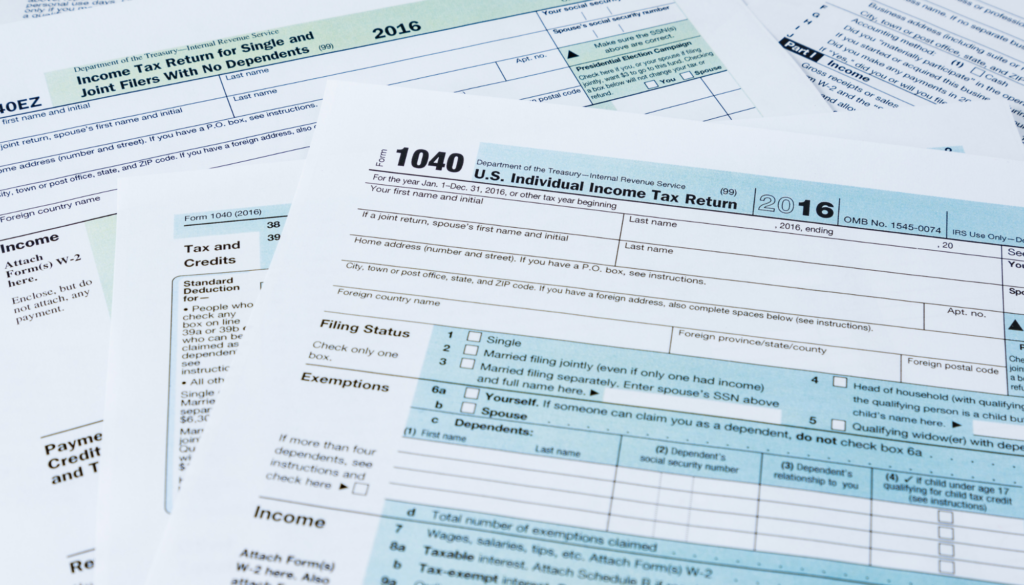The IRS Adjusts for Inflation—Will Your Taxes Be Affected?

With inflation at its highest rates in decades, the markets in turmoil, and a recession looming, we’re overdue for some good news. Finally, we have some: starting in 2023, you may pay less in taxes.
That’s because on October 18, the IRS announced annual inflation adjustments for more than 60 tax provisions, including income tax brackets, deductions, and credits. The changes will apply to tax year 2023 for returns filed in 2024.
Some of these areas are adjusted annually for inflation, but it’s rare to see so many areas updated at once—or by so much. In this post, we’ll look at some of the most notable changes. You can see the entire list here.
Tax Brackets
The federal government has a progressive income tax, meaning that income is taxed at different rates as it rises past certain thresholds. Since 1985, the tax brackets have been automatically indexed for inflation to ensure that taxpayers aren’t artificially pushed into higher brackets.
This being a record year for inflation means it’s a record year for tax brackets as well. While the tax rates remain the same for each bracket, the thresholds at which each kicks in have increased. That means that assuming your income remains the same in 2023 as in 2022, you may actually pay less in taxes, thanks to the IRS’s adjustments. These rates apply to ordinary income, which includes salaries, self-employment income, and interest.
See the charts at the bottom of this post for all the income tax brackets for 2023.
Standard Deductions
Adjusted for inflation every year, standard deductions are flat amounts based on filing status that reduce annual taxable income. Over 85% of taxpayers claim standard deductions, as opposed to itemizing their tax returns. They’ll be happy to note that as of 2023, standard deductions across all categories will increase by around 7% in most categories.

Flexible Spending Accounts & Health Spending Accounts
Flexible Spending Accounts (FSAs) are tax-advantaged accounts that allow employees to use pre-tax dollars to pay for medical expenses. Beginning in 2023, employees with access to FSAs will be able to contribute as much as $3,050, a $200 increase from current limits. The maximum carryover amount has been raised by $40 to $610.
Health spending accounts (HSAs) are similar in concept to FSAs but controlled by individuals rather than employers. The IRS actually announced its inflation-adjusted amounts for HSAs back in April. For 2023, the annual limitation on deductions for an individual with self-only coverage under a high deductible health plan is $3,850, an increase of $200 from 2022 (for context, the increase from 2021 to 2022 was only $50). The annual limitation on deductions for an individual with family coverage under a high deductible health plan is $7,750, an increase of $450 from 2022.
Alternative Minimum Tax Rate
The alternative minimum tax rate (AMTR) limits tax breaks to ensure that higher-income earners pay at least a minimum amount of tax. The new procedures have raised the exemption from $75,900 to $81,300 for single filers; from $118,100 to $126,500 for married filing jointly, and from $59,050 to $63,250 for married filing separately.
The procedures also raise the income threshold at which the exemption begins to phase out: from $539,900 to $578,150 for single filers; from $1,079,800 to $1,156,300 for married filing jointly, and from $539,900.
Qualified Stock Dividends & Long-term Capital Gains
Capital gains are the profits made from selling investments that have been held over a year, including stocks, bonds, and real estate. Qualified stock dividends are distributions from shares of corporations that have been held for a minimum amount of time. Both are taxed by income thresholds, which have been adjusted for 2023.
Individuals earning below $44,625 and married couples earning $89,250 will pay 0%. Individuals and married couples earning above those amounts will pay 15%. Individuals earning more than $492,300 and married couples earning more than $553,850 will pay 20%.
Estate Tax & Gift Exclusions
Under the new procedures, the annual exclusion for gifts from individuals increases from $16,000 to $17,000. For married couples, the amount increases to $34,000 from $32,000. Taxpayers can gift this amount to as many individual recipients as they like without paying tax and without using up any of the taxpayer’s lifetime gift and estate tax exemption, which is also increasing in 2023 from $12.06 million to $12.92 million for individuals and from $24.12 million to $25.84 million for couples.
The basic exclusion for estates of decedents who die in 2023 has also increased from the current $12.06 million to $12.92 million, meaning that estates are shielded from any federal estate or gift tax up to that amount.
Earned Income Tax Credit
The Earned Income Tax Credit (EITC) is a refundable tax credit for low- and moderate-income workers based on filing status, income, and number of children.
The new maximum EITC amount will be $7,430 for qualifying taxpayers with three or more qualifying children, up from the current $6,935. The maximum adjusted gross income will rise from $53,057 to $56,838 for single or head of household filers, and $59,187 to $63,398 for married filing jointly.
Other Areas Affected
The new IRS procedures also affect student loan interest deductions, long-term care premiums, alternative minimum tax, foreign earned income, a number of provisions affecting businesses, and many others.
We encourage you to seek qualified tax advice from a professional to ensure that you are taking advantage of all the tax breaks that you’re eligible for.





Let's Talk
If you’re interested in working with Tonneson + Co, please reach out to us. We look forward to hearing from you!
"*" indicates required fields
